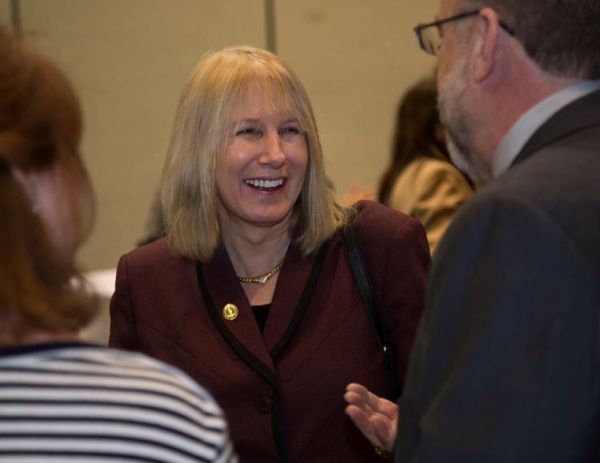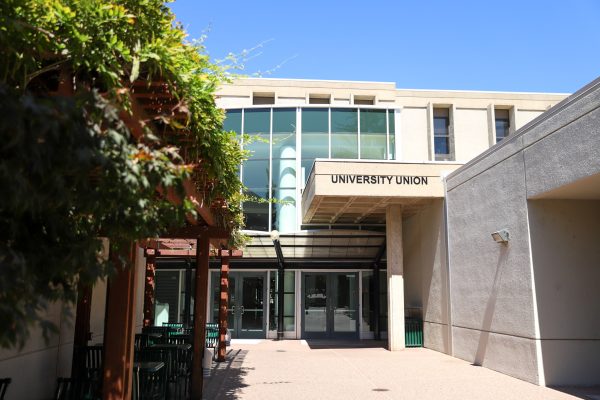New provost wants to increase graduation rates

Incoming Provost Frederika “Fraka” Harmsen speaks with College of Health and Human Services Dean Fred Baldini during coffee and conversation prior to the address.
February 3, 2014
Frederika “Fraka” Harmsen, joined Sacramento State Monday as the second-highest ranking official and vice president of Academic Affairs.
Harmsen will work alongside President Alexander Gonzalez and bring many different experiences. She attended minus-30-degree expeditions in Antarctica and was most recently the dean of the College of Natural Sciences at Chico State.
“It is an inspiring opportunity to move the university forward in a number of key areas, including student success and timely graduation rates,” Harmsen said.
Former provost Charles Gossett met with Harmsen to discuss the position and said she is a great listener with fresh ideas and approaches to some Sac State issues.
Gossett will continue to aid Gonzalez and Harmsen with current projects and will resume teaching in the fall.
“I think she is going to bring some wonderful tools with her to the table,” Gossett said. “She has been at the CSU system for a number of years. She is very familiar with being part of the system of universities.”
Harmsen’s vision for Sac State is to reach the CSU Graduation Initiative, a 2010 resolution to bolster degree completion by increasing the graduation rate from 46 percent to 54 percent by 2015.
To better prepare students for college, the initiative aims to reduce the achievement gap between students from underrepresented minorities and non-underrepresented minorities, by half from the current 11 percent to five percent.
The CSU system is the largest in the country, including 23 colleges and more than 400,000 students.
“The CSU has implemented a broad array of programs and partnerships that are designed to engage students from elementary school all the way through high school to inform students of pathways to college,” Harmsen said, about the outreach programs designed to prepare individuals academically.
Harmsen plans to support programs that engage and excite students starting at the elementary school level to inspire individuals into science, technology, engineering and mathematics careers.
There is a nationwide push for more college graduates with STEM degrees, she said. She said it is important to assist teachers in the K-12 system, allowing them to engage and excite students “through real-world problem solving.”
Harmsen would like to see more international students on campus and hopes to work closely with the International Institution to provide students with summer semester or academic-year study abroad opportunities.
“I think it is really important to promote international and cross-cultural learning,” Harmsen said. “It is important to produce graduates who are prepared to accept the responsibility as citizens of the world.”
She also aims to improve diversity among faculty by advertising in appropriate channels to attract Hispanic, African-American and other minority candidates.
“It is very important to have diversity among the faculty,” Harmsen said. “Every faculty search is an opportunity to invite a diverse pool of candidates.”
President of the Sacramento State chapter of the California Faculty Association Kevin Wehr said a possible challenge for Harmsen could include low morale due to several issues, such as salary inequality between newer and experienced faculty.
“I think there is some real issues around morale on our campus and I look towards the new provost’s leadership around issues of morale,” Wehr said.
Harmsen said she plans to tackle the issues of faculty and non-tenured faculty by listening to concerns.
“Faculty development is key to helping support the faculty in terms of their research (and) in their teachings,” Harmsen said.








































































































































